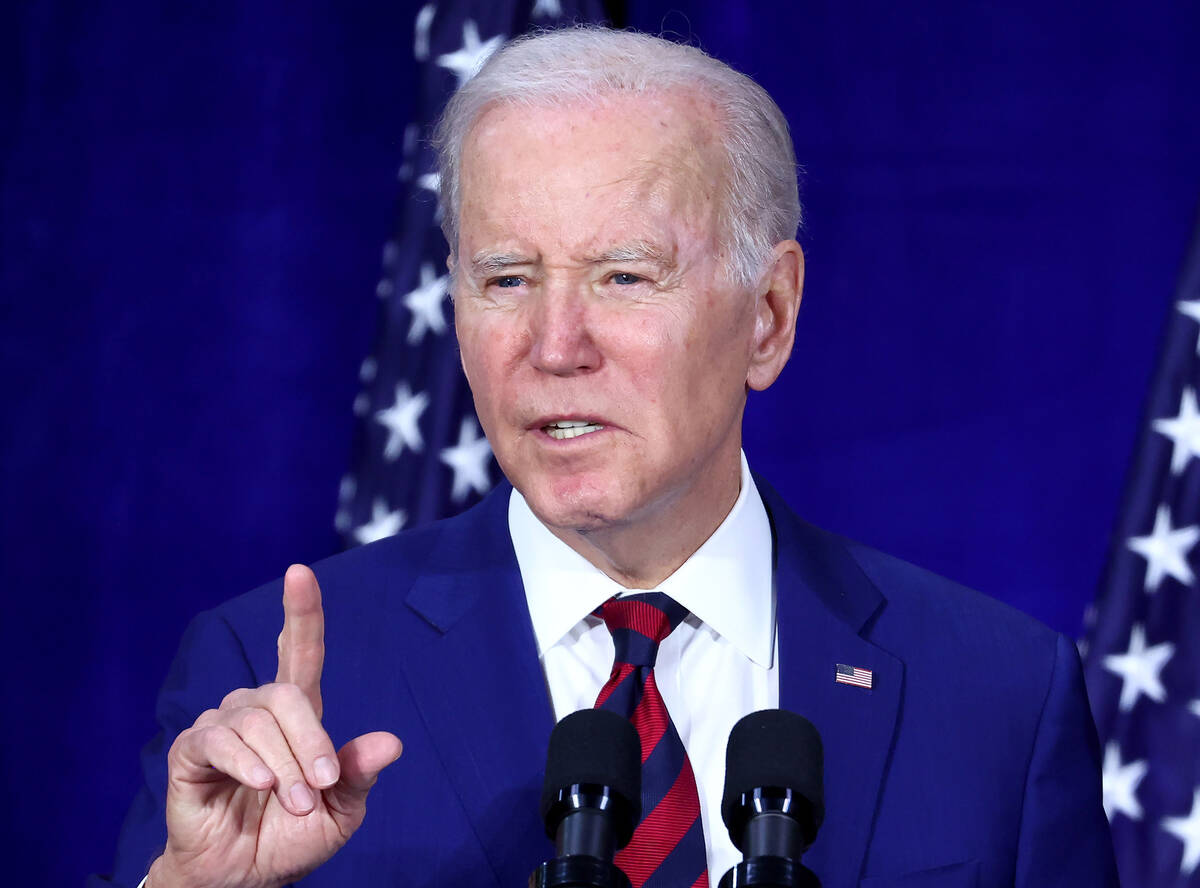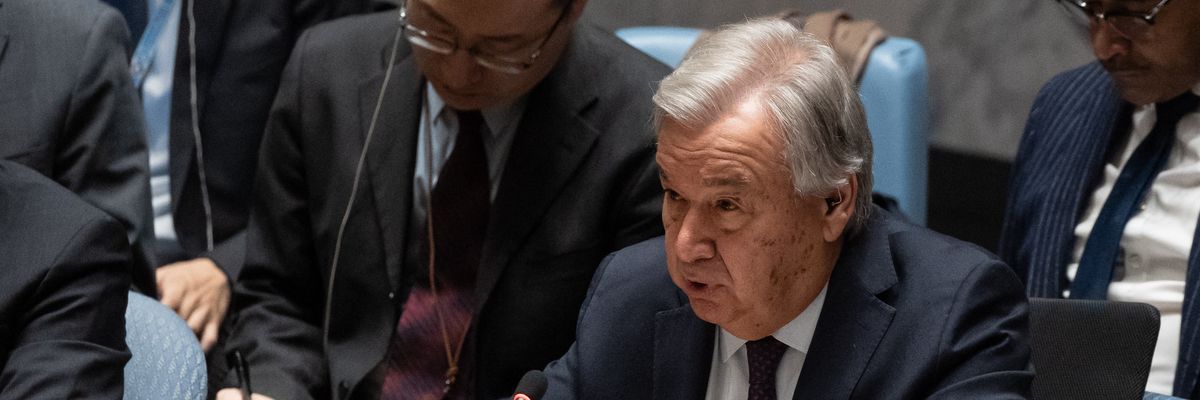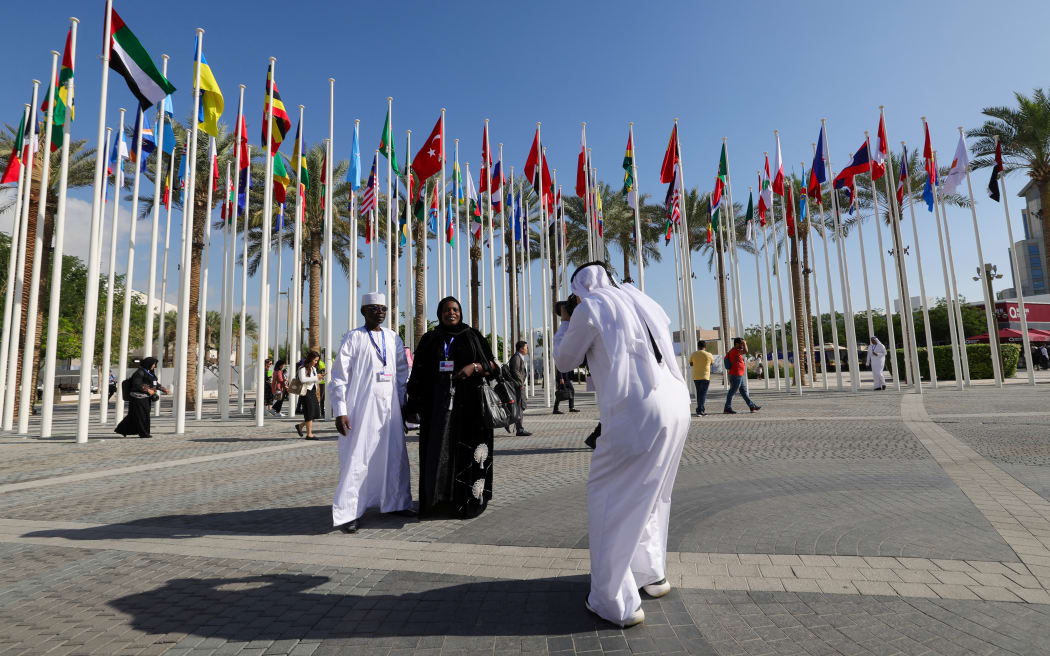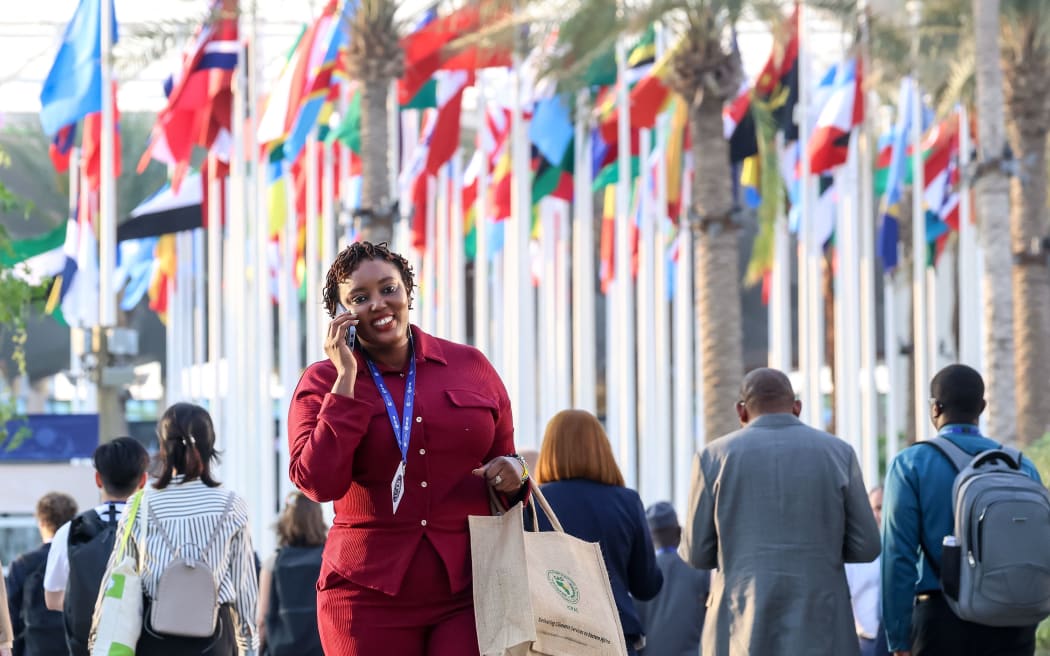Nicholas R. Micinski, University of Maine;
Mon, 11 December 2023

Palestinians fleeing the northern part of the Gaza Strip on Nov. 10, 2023. Belal Khaled/Anadolu via Getty Images
As a result of the monthslong Israeli air and ground campaign in northern Gaza Strip, more than 1.8 million of the strip’s population have been displaced from their homes. And with the operation heading into Gaza’s south, many are now fleeing areas they were told would be safer.
This mass displacement – some 80% of the Gaza population – is a deliberate element of Israel’s military campaign, with complex objectives. In the early stages of the conflict, the Israeli military said it was emptying areas for civilians’ own safety – despite mass evacuation orders being against international law, except in very discrete scenarios.
Since then, other longer-term objectives have been touted by voices in and around the Israeli government. On Oct. 17, 2023, the Misgav Institute for National Security and Zionist Strategy, an Israeli think tank with links to the government, published a paper arguing that the current military campaign presented “a unique and rare opportunity to evacuate the entire Gaza Strip.”
Meanwhile, a leaked document from Oct. 13, purportedly from the Israeli intelligence ministry, proposed the permanent relocation of all or a portion of Palestinians in Gaza through three steps: set up tent cities in Egypt, create a humanitarian corridor, and build cities on the Sinai Peninsula. The document concluded that the relocation was “liable to provide positive and long-lasting strategic results.”
Similarly, Israel’s intelligence minister has promoted a plan to resettle Gazan residents in countries around the world, while a pro-Israeli government news outlet has reported that Israeli Prime Minister Benjamin Netanyahu is eyeing a plan to “thin” Gaza’s population “to a minimum.”
To be clear, the Israeli government has not publicly confirmed any plan for Gaza’s population after the current conflict. But as scholars of migration and war, we understand that displacement in conflict is often strategic – that is, it can serve specific short-term and long-term goals.
Displacement as a tool of war
Historically, population displacement has been used for three strategic reasons in conflicts:
As a means of controlling or expelling a population seen as hostile or undesirable. This occurred during the war in Bosnia from 1992 to 1995, when the Serbian army expelled or killed whole communities of Bosniaks, resulting in the ethnic cleansing of 82% of the non-Serb population. More recently, nearly the entire Armenian population of the enclave of Nagorno-Karabakh fled the threat of violence by Azerbaijan forces. In other cases, armed groups uproot civilians in order to subjugate them, rather than remove them en mass. From 1993 to 2002, security forces in Turkey used systematic village evacuations to control and pacify the Kurdish population as part of counterinsurgency operations against the Kurdistan Workers’ Party, or PKK.
As a grab for territory and resources. This occurred in the Western Sahara, which Morocco claims as part of its territory. Since 1975, the Moroccan government has sought to repopulate the former Spanish colony by moving Moroccan nationals in and forcing the displacement of Sahrawis to refugee camps in Algeria. As a result, the population of Moroccan-controlled Western Sahara is comprised of twice as many Moroccans as Sahrawis, and nearly 200,000 Sahrawis remain refugees.
As a sorting mechanism to weed out disloyal or disobedient populations. During the Syrian Civil War, President Bashar al-Assad’s government systematically depopulated rebel-held areas. Refugees returning to Syria from neighboring countries like Lebanon and Jordan – along with internally displaced Syrians – were put through laborious security checks to vet their loyalty and ensure they do not pose a threat to the Assad regime.
Permanent displacement
In the context of the current conflict in Gaza, all three strategies of population displacement – as control, territorial expansion and sorting – have been reportedly suggested by officials or others with Israeli government ties.
Israel has leveraged the threat of mass exodus of Palestinians to the Sinai Peninsula in negotiations with Egypt. Reports suggest that Israel has floated the idea of paying off Egypt’s massive International Monetary Fund debt in exchange for the country hosting refugees from Gaza, or offering large aid packages in exchange for setting up temporary camps in Sinai.
However, Egypt has refused to open its border beyond allowing a few hundred Palestinians with dual citizenship and several dozen critically injured individuals to cross.
The mass displacement of Palestinians from Gaza on a permanent basis – be it to Egypt or throughout the world – is unlikely, as it would require agreement from would-be host countries and the compliance of Palestinians, though the chief of the United Nations Relief and Works Agency recently cautioned that Israel is continuing to pursue this strategy. Moreover, the permanent resettlement of Palestinians from Gaza would amount to ethnic cleansing, something the U.N. has already warned of.
Any temporary displacement from Gaza would require a guarantee of the right to return for the displaced, and a commitment from Israel that there would be a rebuilt Gaza to return to – and neither is certain.
‘Indefinite’ occupation
One option being discussed by Netanyahu is for Palestinians in Gaza to live under Israeli security controls for an “indefinite period,” as they did before Israel’s withdrawal from Gaza in 2005.
Such a move would be in line with Israel’s security goal of removing Hamas from its borders. Reoccupation – or even annexation, as some Israeli analysts have promoted – of parts of northern Gaza, coupled with the depopulation of these areas, would enable the Israeli military to turn these areas into buffer zones.
But occupation is very resource and labor intensive. Israel will be reluctant to commit to rebuilding Gaza, patrolling the streets and carefully monitoring and governing the population. And an indefinite occupation would put Israeli soldiers at risk and likely become unpopular with the Israeli public and the international community. Already, U.S. President Joe Biden has warned Israel against the reoccupation of Gaza, calling the option “a big mistake.”
Filtering for Hamas
An alternative to a full occupation is for Israel to continue to drive the Palestinians in Gaza further south, and only allow those deemed not to pose a threat to Israel back in northern Gaza. Israel has stated its intention is to eradicate Hamas. To that end, it has pushed civilians into increasingly smaller areas in the south, with the implication being that those who fail to leave are suspect.
Mark Regev, a senior adviser to Netanyahu, claimed as much in an interview with CNN: “We … asked all the civilians to leave, and most of them did. … One has to ask: They had ample time to leave, why didn’t they heed the advice to leave the area?”
Of course, the implication that those not fleeing are Hamas fighters or supporters ignores the plight of immobile populations like the elderly, disabled and orphans. It also puts the onus on civilians to know where the evacuation zones are.
After the seven-day pause in fighting, Israel resumed the bombardment and began issuing evacuation orders using a numbered grid of neighborhoods in Gaza, splitting the strip into more than 600 areas. The Israeli military said this is to protect civilians; however, it could also serve as a crude method of differentiating civilians from Hamas and other militants – the assumption being that people who stay will be viewed as as potential threat.

Map shared by an Israeli military official depicting zones in the Gaza Strip. @AvichayAdraee/Twitter
Indeed, images emerged on Dec. 7 of Israeli soldiers detaining seminaked Palestinian men on their knees at gunpoint, allegedly filtering for Hamas fighters.
Controlling Gaza’s population through the use of zones, formal occupation or resettlement elsewhere are strategies that have been repeatedly suggested during the course of the conflict. Which of them, if any, comes to fruition will depend not just on the actions of Israelis and Palestinians, but also on other states and international organizations – namely Egypt, the United States and the United Nations.
And to greater or lesser degrees, all three entities have warned Israel against the strategic use of forced displacement to serve its political and military ends. After all, “forcible transfer” is in itself a crime under international law. The question now is whether such factors will influence how Israeli officials use strategic displacement – and what it will mean for the future of the Palestinians in Gaza.
This article is republished from The Conversation, a nonprofit, independent news organization bringing you facts and analysis to help you make sense of our complex world.
It was written by: Nicholas R. Micinski, University of Maine; Adam G. Lichtenheld, Stanford University, and Kelsey Norman, Rice University.
Read more:
What is the rule of proportionality, and is it being observed in the Israeli siege of Gaza?
How the ‘laws of war’ apply to the conflict between Israel and Hamas
Israel rejects claims it is trying to force Palestinians out of Gaza
Julian Borger in Jerusalem
Mon, 11 December 2023
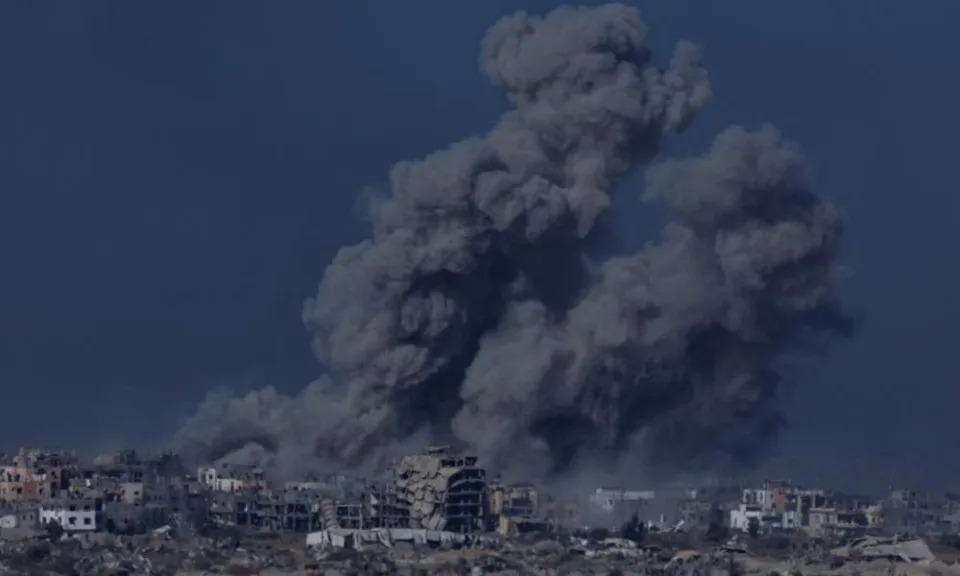
Israel has rejected suggestions it is trying to force Palestinians out of Gaza as Arab leaders and aid officials warn its intensifying ground offensive could leave civilians with few other options.
Some of the heaviest close-quarters fighting in more than two months of conflict took place over the weekend, as the Israel Defense Forces tried to consolidate control of urban centres in northern Gaza and pursued Hamas leaders in the heart of the biggest city in the south, Khan Younis.
The Israeli prime minister, Benjamin Netanyahu, claimed dozens of Hamas fighters had surrendered, calling it the beginning of the end for the militant group that has controlled Gaza since 2007. Hamas called the claim “false and baseless”.
Meanwhile, the group issued fresh demands for Palestinian prisoners in Israeli jails to be released and threatened the lives of the hostages it holds if they were not.Interactive
Israel believes Hamas is still holding about 137 hostages, while there are thought to be 7,000 Palestinians in Israeli prisons, many detained without charge. Family members of the hostages protested at the Knesset on Monday after being refused admission to a meeting the foreign affairs and defence committee held with Netanyahu, where they sought to keep pressure on the prime minister to keep the lives of hostages central to his decisions.
Qatari officials, who helped broker a humanitarian pause last month to allow the exchange of hostages for Palestinians prisoners, said there were few immediate prospects of a repeat of such a deal. The Qatari prime minister, Sheikh Mohammed bin Abdulrahman Al Thani, said Israel’s relentless bombardment was “narrowing the window” for a potential agreement.
The spread of the ground offensive to the south of Gaza, accompanied by heavy bombing, has created an untenable situation for the population, humanitarian organisations have said. The death toll so far is estimated at more than 18,200 and more than 1.8 million people, or about 80% of the population, have been forced from their homes since the conflict broke out on 7 October. It was triggered by an attack by Hamas gunmen who broke through the Gaza border and went on a rampage through Israel villages, killing about 1,200 people, mostly civilians.
Israel has said 104 members of its forces have been killed in Gaza since the ground operation began on 27 October, and 582 soldiers have been injured.
Related: ‘People will die in the streets’: Gaza dreads onset of winter as disease rises
The UN Relief and Works Agency (UNRWA) said 1.3 million of the displaced people in Gaza were sheltering in 154 of its facilities, which were heavily overcrowded. Aid officials have warned that cholera and pneumonia are an increasing threat among the dense camps of improvised tents along Gaza’s southern border with Egypt, as sanitation breaks down and nighttime temperatures dip.
The head of the World Health Organization, Tedros Adhanom Ghebreyesus, said: “Gaza’s health system is on its knees and collapsing.”
In face of the catastrophic humanitarian situation, Jordan’s foreign minister, Ayman Safadi, accused Israel over the weekend of “a systematic effort to empty Gaza of its people”.
The head of UNRWA, Philippe Lazzarini, has said that “the developments we are witnessing point to attempts to move Palestinians into Egypt”. He wrote in the Los Angeles Times: “If this path continues, Gaza will not be a land for Palestinians any more.”
Eylon Levy, an Israeli government spokesman, rejected suggestions Israel intended to empty Gaza of Palestinians as “outrageous and false accusations”, arguing that the aim was only to persuade Palestinians to leave the principal combat areas.
The UN and other agencies, however, have said the impact of the offensive has been to make the whole of Gaza uninhabitable and to cripple the humanitarian effort.
The Biden administration faced severe criticism from Arab allies and human rights organisations over the weekend for its sole vote at the UN security council against a ceasefire resolution, blocking it with the US veto.
The UN secretary general, António Guterres, said the security council’s “authority and credibility were severely undermined” by the failure of the resolution.
The matter will pass to the UN general assembly, in a debate on Tuesday on a similar resolution, most likely to be followed by a vote. A resolution passed by the assembly has no binding authority in international law, but it is expected to underline the increasing isolation of Israel and the US in their efforts to fend off a ceasefire.
The US secretary of state, Antony Blinken, on Sunday restated the US’s argument against a ceasefire. “With Hamas still alive, still intact and … with the stated intent of repeating 7 October again and again and again, that would simply perpetuate the problem,” he told ABC News.
Blinken said Israeli forces should ensure “military operations are designed around civilian protection”, but admitted they had fallen short. “I think the intent is there. But the results are not always manifesting themselves,” he said.
The Biden administration has faced intensified scrutiny after it revealed it had bypassed Congress to supply tank shells, and was reported not to be carrying out continual assessments of whether Israel was committing possible war crimes.
The Washington Post cited unnamed officials as admitting the US was not following guidelines Biden established in February for all arms transfers to foreign governments to be subjected to continual examination of the recipient’s record on the Geneva conventions and other global norms for conducting warfare.
It was widely reported in the Israeli press on Monday that the US has been trying to persuade Israel to wrap up its Gaza offensive by the end of this month, while the IDF had asked for more time, until the end of January, to achieve the stated war aims, to destroy Hamas as a military and political force and secure the release of the hostages.
Blinken said the issue of the duration of the war had been raised in US-Israeli discussions, but told CNN: “These are decisions for Israel to make.”
Israel’s national security adviser, Tzachi Hanegbi, said there was no deadline for Israel to achieve the twin goals of dismantling Hamas and rescuing the remaining hostages. “The evaluation that this can’t be measured in weeks is correct, and I’m not sure it can be measured in months,” he told Channel 12.
Related: West Bank settler violence – a photo essay
Netanyahu criticised countries including France and Germany that have called for a ceasefire: “You cannot on the one hand support the elimination of Hamas, and on the other pressure us to end the war, which would prevent the elimination of Hamas.”
Italy, France and Germany called on the EU to impose sanctions on Hamas and its supporters in a joint letter to the EU’s foreign policy chief, Josep Borrell, on Monday. The French foreign minister, Catherine Colonna, said France was also considering imposing sanctions on Israeli settlers in the occupied West Bank.
“We will work on proposing sanctions on extremist settlers in the West Bank,” Borrell told reporters in Brussels on Monday.
In Israel’s north, violence escalated at the border with Lebanon on Sunday as Hezbollah launched explosive drones and missiles at Israeli positions and Israeli airstrikes rocked several towns and villages in south Lebanon. The IDF said on Monday it had carried out air strikes on southern Lebanon in response to missile launches aimed at communities in the northern Galilee area.
Our Foreign Staff
Sat, 9 December 2023

Palestinian firefighters try to extinguish a fire in a house after a reported air strike in Khan Younis in the southern Gaza Strip - IBRAHEEM ABU MUSTAFA/Reuters
Israel has ordered residents out of the centre of Gaza’s main southern city Khan Younis and pounded the length of the enclave, while reporting the loss of another five of its soldiers.
Four soldiers were killed in the battle in Southern Gaza, while the fifth succumbed to his wounds after fighting on October 7, according to the Israeli army statement posted on X.
Since a truce with Hamas in the two-month-old war collapsed on December 1, Israel has expanded its ground assault into the southern half of the Gaza Strip, pushing into Khan Younis, where residents reported fierce battles. Both sides also reported a surge in fighting in the north.
Israel said its campaign was making progress. National Security Adviser Tzachi Hanegbi said Israeli forces had killed at least 7,000 Hamas militants, without saying how that estimate was reached, and military chief Lieutenant-General Herzi Halevi told soldiers “we need to press harder”.
An official toll of deaths in Gaza from the Palestinian health ministry in the Hamas-run enclave exceeded 17,700 on Saturday, with many thousands missing and presumed dead under the rubble. The ministry has said about 40 per cent of deaths were of children under 18.
Israeli forces say they are limiting civilian casualties by providing maps showing safe areas, and blame Hamas for harming civilians by hiding among them, which the fighters deny. Palestinians say the campaign has turned into a scorched-earth war of vengeance against the entire population of an enclave as densely populated as London.
Israel’s Arabic-language spokesperson on Saturday posted a map on X highlighting six blocks of Khan Younis to evacuate “urgently”.
Israeli Prime Minister Benjamin Netanyahu on Saturday welcomed Washington’s veto at the Security Council a day earlier to reject a vote backing a humanitarian ceasefire resolution, saying: “Israel will continue our just war to eliminate Hamas.”
Washington has said it told Israel to do more to protect civilians but still backs Israel’s position that a ceasefire would benefit Hamas. On Saturday, the Biden administration bypassed the US Congress to approve an emergency $106 million sale of ammunition to Israel.
EXPLAINER-Why Palestinian displacement in Gaza war alarms the UN and Arabs
Mon, 11 December 2023
By Tom Perry and Maayan Lubell
BEIRUT/JERUSALEM, Dec 11 (Reuters) - Israel's orders to Gaza's residents to move ever further south towards the Egyptian border during its offensive and the dire humanitarian situation have sparked Arab and U.N. concerns that Palestinians may eventually be driven over the border.
Israel denies having any plans to push Palestinians into Egypt's Sinai Peninsula as it pursues its goal of destroying Hamas following the group's devastating Oct. 7 attack on Israeli soil. It says it has told Gazans to move for their own safety.
WHAT IS BEHIND THE CONCERNS?
Palestinians have long been haunted by what they call the "Nakba", or catastrophe, when 700,000 of them were dispossessed from their homes when Israel was created in 1948.
Many were driven out or fled to neighbouring Arab states, including to Jordan, Syria and Lebanon, where many of them or their descendants still live in refugee camps. Some went to Gaza. Israel disputes the account that they were forced out.
The latest conflict has seen an unprecedented Israeli bombardment and land offensive in Gaza, devastating urban areas throughout the enclave. Palestinians and U.N. officials say there are no longer any safe areas inside Gaza to seek shelter.
WHAT HAS HAPPENED DURING THIS CONFLICT?
Before Israel launched its ground offensive in Gaza, it initially told Palestinians in north Gaza to move to what it said were safe areas in the south. As the offensive expanded, Israel told them to head further south towards Rafah, located next to Egypt, the only country apart from Israel to share a border with the enclave, which is only 40 km (24.85 miles) long and a few kilometres wide.
According to U.N. estimates, up to 85% of the 2.3 million people in Gaza - one of the most densely populated areas of the world - have already been displaced from their homes and are now crammed in an ever smaller area near the border.
WHAT HAS HAPPENED DURING PREVIOUS GAZA BORDER INCIDENTS?
There has been no precedent for people fleeing en masse from Gaza during conflicts and flare ups with Israel in recent years, although no previous war has been this fierce. However, there have been incidents when Gaza's border with Egypt was breached, although those crossing numbered hundreds or thousands, and those people were not seeking shelter or to stay.
Following Israel's withdrawal from the Gaza Strip in 2005, Palestinians breached the fence, with some clambering over with make-shift ramps and using ropes. At one place, Palestinian militants rammed a concrete barrier to break a hole.
Hamas breached the frontier again in 2008, challenging a blockade imposed by Israel and Egypt after the group seized control of the Gaza Strip in 2007 from the West Bank-based Palestinian Authority. The border remained breached for about 10 days before Egypt resealed it.
COULD A MAJOR DISPLACEMENT HAPPEN IN THIS CONFLICT?
Many Palestinians inside Gaza have said they would not leave even if they could because they fear it might lead to another permanent displacement in a repeat of 1948. Egypt, meanwhile, has kept the border firmly closed except to let a few thousand foreigners, dual nationals and a handful of others leave Gaza.
Egypt and other Arabs strongly oppose any attempt to push Palestinians over the border.
Yet, the scale of this conflict eclipses other Gaza crises or flare up in past decades, and the humanitarian disaster deepens for Palestinians by the day, leaving them without enough food or water, while few hospitals still function.
WHAT ARE ARAB STATES AND THE U.N. SAYING?
From the earliest days of the conflict, Arab governments, particularly Israel's neighbours Egypt and Jordan, have said Palestinians must not be driven from land where they want to make a future state, which would include the West Bank and Gaza.
Like Palestinians, they fear any mass movement across the border would further undermine prospects for a "two-state solution" - the idea of creating a state of Palestine next to Israel - and leave Arab nations dealing with the consequences.
As the humanitarian crisis has worsened, top U.N. officials have added their voices to concerns about a mass displacement.
"I expect public order to completely break down soon and an even worse situation could unfold including epidemic diseases and increased pressure for mass displacement into Egypt," U.N. Secretary General Antonio Guterres said on Dec. 10.
Philippe Lazzarini, head of the U.N. Palestinian refugee agency UNRWA, wrote in the Los Angeles Times on Dec. 9 that "developments we are witnessing point to attempts to move Palestinians into Egypt, regardless of whether they stay there or are resettled elsewhere."
WHAT HAVE ISRAEL'S GOVERNMENT AND ITS POLITICIANS SAID?
The Israeli government says it is only telling Palestinians to leave their homes temporarily for their safety but comments by some Israeli politicians - including some close to the government - have stoked Palestinian and Arab fears of a new Nakba.
Asked about the Israel Defense Forces (IDF) offensive and the displacement of Gazans, Israeli Agriculture Minister Avi Dichter told Israel's Channel 12 on Nov. 11: "This is Gaza's Nakba, operationally there's no way to conduct a war the way the IDF wants to conduct it inside Gaza territories while the masses are between the tanks and soldiers."
Dichter is a member of Prime Minister Benjamin Netanyahu's Likud party and is also a minister in the security cabinet.
After Jordanian Foreign Minister Ayman Safadi said on Dec. 10 that Israel's offensive was "a systematic effort to empty Gaza of its people," Israeli government spokesperson Eylon Levy called those comments "outrageous and false accusations."
(Reporting by Maayan Lubell in Jerusalem and Tom Perry in Beirut; Writing by Edmund Blair Editing by Tomasz Janowski)
